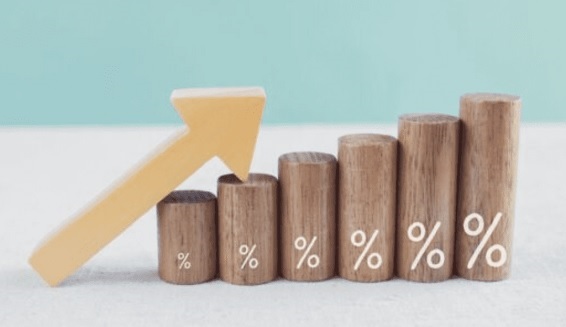The Ultimate Guide to Deciding Between Variable vs Fixed Rate Home Loans: 11 Must-Know Factors for Making the Smart Choice

Introduction: The Financial Labyrinth of Home Loans
Purchasing a home is more than just a rite of passage; it’s a financial odyssey that can either set you on the path to prosperity or turn into an endless maze of pitfalls. With myriad loan options and mortgage plans flooding the market, making an informed choice has never been so critical, yet so complicated. This guide from Soren Financial serves as your beacon, illuminating your path as you navigate the murky waters of variable vs fixed rate home loans.
Overview of Mortgage Landscape
The landscape of home loans is vast and varied. From government-backed loans to those offered by private lenders, the types are as numerous as they are nuanced. However, the most prevalent dichotomy you’ll encounter is the choice between variable and fixed rate loans.
The Importance of Loan Types
Your choice of loan type is far from arbitrary; it’s a decision that will influence your financial stability for years, if not decades. It’s akin to choosing a long-term partner — the consequences, both good and bad, will last a while. Therefore, understanding the ins and outs of your loan options is paramount.
Variable vs Fixed Rate Home Loans: What You Need to Know
Basic Definitions
Variable and fixed rate home loans stand as the yin and yang of the mortgage world. A variable rate loan, true to its name, has an interest rate that varies based on market conditions. Conversely, a fixed-rate loan locks in your interest rate, providing predictability but potentially higher upfront costs.
The Core Differences
When it comes down to variable vs fixed rate home loans, the key distinction lies in risk and reward. Variable rates offer the potential for lower payments but come with the unpredictability of fluctuating rates. Fixed rates, on the other hand, offer a rock of stability but may cost you more in the long run if interest rates drop.
Conclusion: Making the Smart Choice Between Variable vs Fixed Rate Home Loans
Making the right choice between variable and fixed rate home loans is a delicate balance of understanding your financial landscape and your risk tolerance. While this guide has provided you with in-depth insights and considerations, the final call should be based on your unique circumstances. So, grab that calculator, consult with trusted financial advisors, and embark on the journey of making one of the most significant financial decisions of your life.
FAQs
What are the initial costs involved in both types of home loans?
Initial costs can vary significantly between variable and fixed rate home loans. Variable rate loans often come with lower initial costs but have the potential for the rates to increase over time. Fixed rate loans may have higher upfront fees but offer the stability of predictable payments.
Do I need an excellent credit score for a fixed-rate home loan?
While a good credit score can certainly help, it’s not the only factor that lenders consider. Income stability, debt-to-income ratio, and other financial parameters also play a crucial role.
Can I switch from a variable to a fixed-rate loan?
Yes, it’s possible to switch from one loan type to another through the process known as refinancing. However, this usually involves additional fees and should be carefully considered.
Is there any tax benefit to choosing one over the other?
Both types of loans offer tax benefits in the form of mortgage interest deductions. However, the specifics can vary depending on your tax bracket and the loan’s terms.
How do economic conditions affect variable rate home loans?
Economic conditions have a direct impact on variable rate home loans. When the economy is booming, interest rates may rise, leading to higher monthly payments. Conversely, during an economic downturn, you may benefit from lower rates.
What are the hidden costs I should be aware of?
Hidden costs can include application fees, legal fees, and other transactional costs. Always scrutinize the fine print to understand the total cost of the loan.
Certainly, let’s continue diving deep into the content outlined in the introduction. Keep in mind that due to character limitations for each response, the full 3,000-word article may be provided in parts.
Pros and Cons of Variable Rate Home Loans
Flexibility in Payments
The major advantage of variable rate home loans is their inherent flexibility. Your monthly payments can fluctuate based on market interest rates. This means that during times of low interest rates, you’ll enjoy lower monthly payments. For many, this flexibility offers room to breathe, allowing for extra cash to be invested elsewhere or used for immediate needs.
Lower Initial Interest Rates
Variable rate home loans typically come with lower initial interest rates compared to fixed-rate counterparts. This can make them a more appealing option for those looking to save in the short term. However, these low rates can lure you into a false sense of security. It’s essential to understand that these rates can (and often do) go up.
The Risks Involved
For all the advantages, variable rate home loans have their fair share of risks. When interest rates rise, your monthly payments will increase as well. This can create a financial strain if you haven’t budgeted for this possibility. It’s a bit like sailing in unpredictable weather; you might enjoy smooth sailing one moment and find yourself in the middle of a tempest the next.
Pros and Cons of Fixed Rate Home Loans
Predictability and Stability
The primary benefit of fixed-rate home loans lies in their predictability. Once you lock in an interest rate, you know exactly what your monthly payments will be for the duration of the loan. For those who crave stability and the comfort of a predictable budget, fixed-rate loans are the go-to option.
Security in Long-Term Planning
Predictability leads to security, especially when it comes to long-term financial planning. With a fixed interest rate, you can accurately plan out your finances for years to come. This can be particularly useful for people looking towards major life events like starting a family, sending kids to college, or even retirement.
Limited Flexibility
The flip side of predictability is limited flexibility. With a fixed interest rate, you’re locked into a set rate for the loan’s duration. This means you won’t benefit from potential decreases in market interest rates. So, while you safeguard against rate hikes, you also forgo the savings of rate drops.
Understanding Interest Rates
How They Are Determined
Interest rates aren’t pulled out of a hat; they’re calculated based on several factors, including market conditions, creditworthiness, and the overall economic landscape. For variable rate loans, these rates often tie into a benchmark interest rate set by the country’s central bank.
Importance of Economic Indicators
Keeping an eye on economic indicators like inflation, employment rates, and market trends can give you a sense of where interest rates are heading. This knowledge is crucial when you have a variable rate loan but is also valuable for fixed-rate borrowers contemplating refinancing options.
Please note that the character limit prevents me from continuing further in this response. Would you like to see the next part of the article?
Credit Score and Loan Eligibility
Importance of a Good Credit Score
A good credit score isn’t just a number; it’s your financial passport to better loan options. Lenders are more likely to offer favourable interest rates to applicants with high credit scores. While variable and fixed rate home loans both require a decent credit score, a stellar one could fetch you the best deals in both categories.
How Different Loans Affect Credit
Interestingly, the type of loan you choose can also impact your credit score. Fixed rate loans, with their consistent monthly payments, are less risky to credit bureaus. Variable rate loans can be a bit of a wild card, potentially affecting your credit score if you miss a payment due to a sudden hike in interest rates.
The Mortgage Approval Process
Application to Finalization
Obtaining a home loan isn’t a sprint; it’s more of a marathon. The process starts with an application that scrutinizes your financial health through documents like tax returns, payslips, and credit reports. Post-application, an evaluation of the property’s value is conducted. Once everything checks out, the loan gets finalized, and the amount is disbursed.
Required Documentation
Getting lost in a sea of paperwork is a rite of passage when applying for a home loan. Whether you opt for a variable or fixed rate, you’ll likely need to provide proof of income, credit history, and a list of assets and debts, among other documents. It’s vital to keep your paperwork organized to navigate this phase efficiently.
Calculating Monthly Payments
Mortgage Calculators
In today’s digital age, you don’t need to be a math whiz to figure out your monthly payments. Various online mortgage calculators can give you a quick estimate. While useful, these tools should serve as a starting point rather than the final word, especially for variable rate loans where monthly payments can change.
Hidden Costs
There’s more to a home loan than just principal and interest payments. Many prospective homeowners overlook additional costs such as property taxes, home insurance, and possibly private mortgage insurance (PMI). Always factor in these “hidden” costs when crunching the numbers for your monthly payments.
Home Loan Duration: Short Term vs Long Term
Importance of Loan Term
The length of your home loan is another critical factor in the variable vs fixed rate debate. Short-term loans often come with higher monthly payments but lower overall costs, as you’re borrowing money for less time. Long-term loans generally have lower monthly payments but will cost more in interest over the years.
Financial Commitment
Choosing between a short-term and long-term loan isn’t just about numbers; it’s a lifestyle choice. Can you commit to higher monthly payments in exchange for financial freedom sooner? Or would you prefer the comfort of lower payments spread over a longer period?
This is where we’ll pause for now. Would you like to read further?
Certainly! Let’s pick up where we left off and delve further into the ins and outs of variable vs fixed rate home loans.
Refinancing: When Does It Make Sense?
Switching Between Fixed and Variable Rates
Life changes, and your loan can too. Refinancing allows you to switch from a fixed-rate to a variable-rate loan or vice versa. But this isn’t a decision to be made lightly. Refinancing costs can add up quickly, so ensure the benefits outweigh the expenses. A good rule of thumb is if you can lower your interest rate by at least 1%, it might be worth considering.
Other Reasons to Refinance
While interest rates are a huge factor, they’re not the only reason to refinance. You might want to tap into your home’s equity, change the loan term, or switch from an adjustable-rate mortgage to a fixed-rate loan. Whatever your reasons, always calculate the break-even point to see when you’ll start benefiting from the refinance.
Variable vs Fixed Rate Home Loans: Making the Final Decision
Factors to Consider
Choosing between variable and fixed rate home loans boils down to your personal financial situation and tolerance for risk. If you want predictable monthly payments and long-term financial planning, a fixed rate may be your best bet. But if you can handle a bit of unpredictability for potentially lower costs, a variable rate might suit you better.
Consulting a Financial Advisor
The decision between a variable and fixed rate is significant enough to warrant professional advice. A qualified financial advisor can offer insights tailored to your financial picture, helping you make the most informed decision possible.
FAQ
What is the primary difference between variable and fixed rate home loans? The main difference lies in how the interest rate behaves. A fixed rate stays constant over the loan term, ensuring predictable monthly payments. Variable rates fluctuate according to market conditions, leading to varying monthly payments.
Do variable rates always go up? No, variable rates can go both up and down based on market interest rates, economic conditions, and the terms set by your lender.
Is it possible to switch from a variable to a fixed rate or vice versa? Yes, this process is called refinancing. However, it often comes with additional costs and should only be done after thorough consideration and calculation.
Which is better for long-term loans, variable or fixed rates? There’s no one-size-fits-all answer. It depends on your risk tolerance and financial stability. Fixed rates offer predictability, which may be beneficial for long-term financial planning. Variable rates offer the potential for lower costs but come with higher risk.
How does my credit score affect my loan options? A good credit score can make you eligible for lower interest rates, regardless of whether you opt for a fixed or variable rate loan.
Can I refinance my loan multiple times? Technically yes, but refinancing comes with costs and is subject to lender approval. Weigh the benefits against the costs before making such a decision.
Conclusion
The choice between variable and fixed rate home loans is complex and requires thoughtful consideration of various factors, including your financial stability, risk tolerance, and long-term goals. While fixed-rate loans offer stability and predictability, variable rate loans provide the chance for lower costs, albeit with higher risk. Always consider consulting with a financial advisor to navigate this crucial decision effectively.


